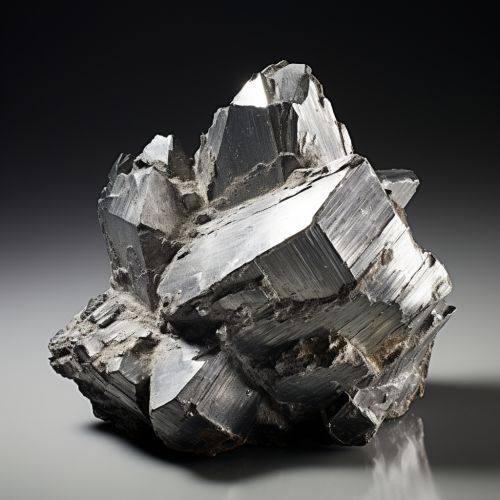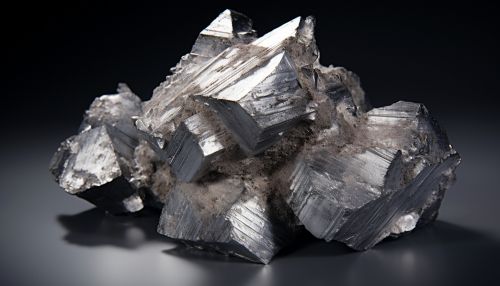Sodium
Overview
Sodium is a chemical element with the symbol Na (from Latin "natrium") and atomic number 11. It is a soft, silvery-white, highly reactive metal. Sodium is an alkali metal, being in group 1 of the periodic table, because it has a single electron in its outer shell, which it readily donates, creating a positively charged ion—the Na+ cation. Its only stable isotope is 23Na. The free metal does not occur in nature, but must be prepared from compounds.
Properties
Physical
Sodium at standard temperature and pressure is a soft metal that can be readily cut with a knife. Freshly exposed surfaces oxidize rapidly in air to form a dull, oxide coating. Sodium burns in air with a brilliant yellow flame. Sodium floats on water, because its density is lower than water’s, and it reacts exuberantly with water, which at room temperature is sufficient to evolve hydrogen gas and cause the sodium to skitter across the surface of the water.
Chemical
Sodium is highly reactive, with a reactivity comparable to that of potassium. It reacts vigorously with water according to the reaction: 2Na(s) + 2H2O → 2NaOH(aq) + H2(g) This reaction is exothermic and releases enough heat to ignite the resulting hydrogen in the presence of oxygen, potentially causing an explosion.
Occurrence and production
Sodium does not occur in nature as a free element and must be extracted from its compounds. In 1807, Sir Humphry Davy became the first to prepare sodium in its elemental form, applying electrolysis to fused sodium hydroxide (NaOH). Sodium is the sixth most abundant element in the Earth's crust, and exists in numerous minerals such as feldspars, sodalite, and rock salt (NaCl). Many salts of sodium are highly water-soluble: sodium ions have been leached by the action of water from the Earth's minerals over eons, and thus sodium and chlorine are the most common dissolved elements by weight in the oceans.


Sodium is commercially produced through the electrolysis of liquid sodium chloride. This is done in a Down's Cell in which the sodium chloride is mixed with calcium chloride to lower the melting point below 700 °C. As calcium is less electropositive than sodium, no calcium will be deposited at the cathode. This method is less expensive than the previous Castner process (electrolysis of sodium hydroxide).
Biological role
Sodium ions are necessary in small amounts for some types of plants, but sodium as a nutrient is more generally needed in larger amounts by animals, due to their use of it for generation of nerve impulses and for maintenance of electrolyte balance and fluid balance. In humans, a high-salt diet has been linked to cardiovascular disease due to high blood pressure, and other harmful effects such as stroke.
Applications
Sodium compounds are of immense commercial importance, being particularly central to industries producing glass, paper, soap, and textiles. The most important sodium compounds are table salt (NaCl), soda ash (Na2CO3), baking soda (NaHCO3), caustic soda (NaOH), sodium nitrate (NaNO3), di- and tri-sodium phosphates, sodium thiosulfate (Na2S2O3·5H2O), and borax (Na2B4O7·10H2O).
Safety
Elemental sodium is a highly reactive metal with a number of hazards associated with its use. It reacts violently with water and can cause fires and explosions when in contact with other substances. Sodium should be handled with care, with appropriate safety precautions taken and only by those familiar with its properties.
